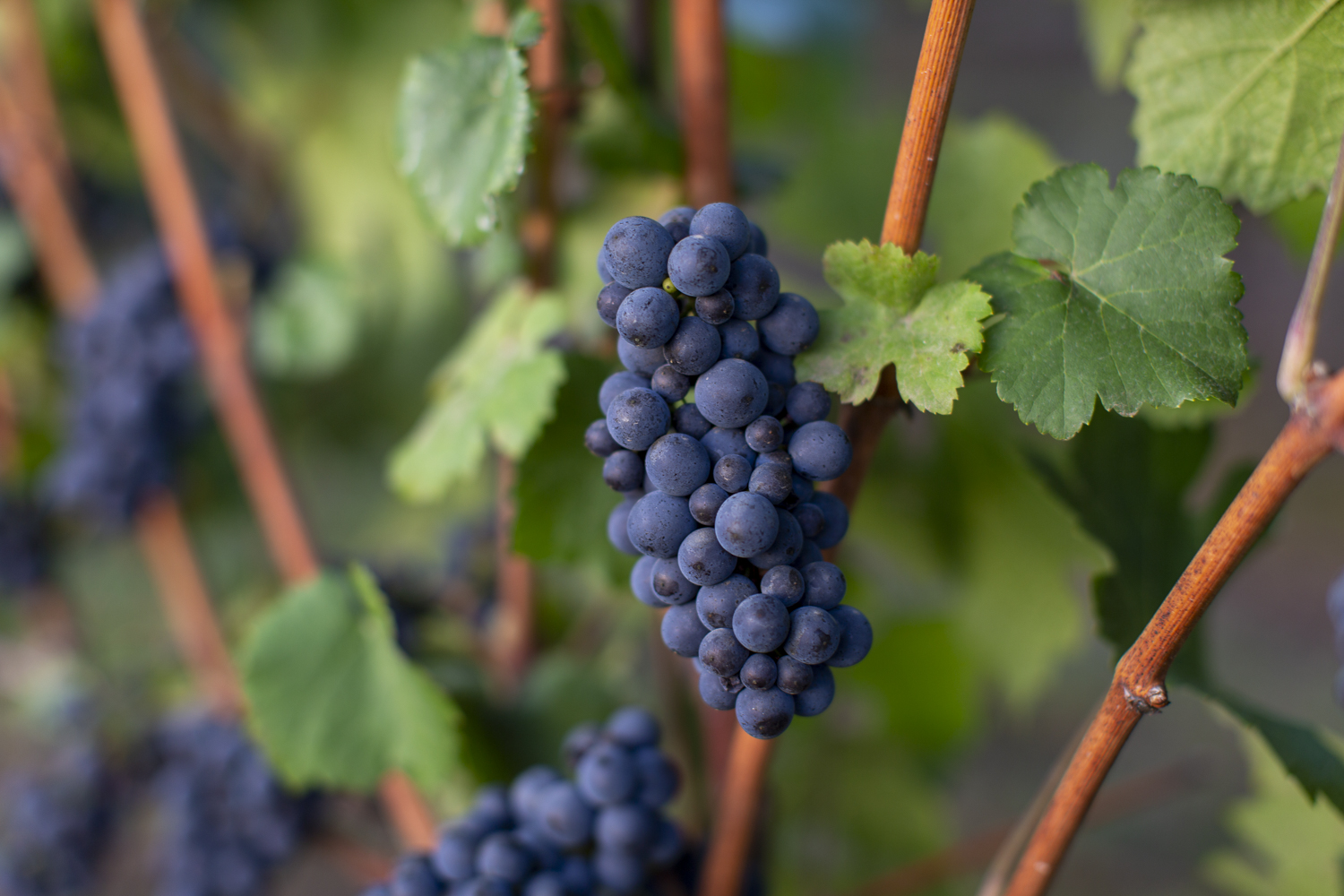Our vineyards are multigenerational – and not just because Elk Cove is in the second generation of the Campbell family. We’ve also grown several generations of our original 10 acres of Pinot Noir using a traditional viticultural technique called Selection Massale.

In 1974, Pat and Joe Campbell planted our first 10 acres of Pinot Noir vines sourced from the “suitcase clones” Charles Coury brought to Oregon, propagated from cuttings he smuggled out of France in a suitcase. This plant material had great genetic diversity, but some vines performed much better than others. Many of our favorite vineyard Pinot Noir blocks since then have been planted using Massal Selection – Selection Masssale if you’re speaking French. We propagate new grapevines from cuttings of our very best vines: plants that show exceptional characteristics like small berry size, small cluster size, intense flavors and early ripening, all of them sourced from those original vines.
In much of the winegrowing world, this “old way” of growing grapevines has been largely replaced by clonal selections. And while we love our clonal selections for what they add to our Pinots – Dijon 115 for its intense small berries and 777 for its dark-fruited complexity – we often favor that original lineage of Pommard Pinot Noir for our single vineyard Pinot Noirs.

Our first success with Selection Massale was back in 1985, when Pat and Joe Campbell took cuttings from their favorite vines to plant La Bohème Vineyard. These vines in turn provided the plant material for our Roosevelt Vineyard block in 1993. Then, in the early 2000s, we took cuttings from our best vines at Roosevelt to plant several blocks of our Mount Richmond Vineyard.

Massal Selection continues to help us improve our vineyard stock while retaining our favorite characteristics of those original 10 acres of Pinot Noir. In 2020 it all came full circle as we planted our 5th generation of Pommard vines back at La Bohème, this time on resistant rootstock using cuttings from our Mount Richmond Vineyard. In 2022, we planted another 10 acres of La Bohème the very same way, this time using cuttings from our Roosevelt Vineyard. So perhaps instead of calling those first 10 acres “old vines” we should call them great, great, grandmother vines.
Want to learn more about Selection Massale? Check out these articles:
Preserving Wine Diversity: Selection Massale
Overturning the Monoclonal Status Quo

Update: The Campbell Vine Selection Comes Full Circle
In 2020 and 2022, we replanted about 25% of La Bohème Vineyard using vines selected from our Roosevelt block. While the removal of the vines from one of our most loved vineyard sites may have seemed sudden to visitors, in truth we’d been preparing for this replanting for many years.
We anticipate the lifespan of our grapevines to be between 40 and 60 years, although no one really knows how old an Oregon vine can last because modern Oregon vineyards are mostly relatively young. The aging of own-rooted vineyards is accelerated by an underground louse called phylloxera. Thankfully in our relatively cool climate with well-drained sandy soils and sustainable viticulture, the pest moves slowly over the course of years rather than months in some warmer climates. We estimate it’s been in La Bohème for 15+ years, likely brought in on soil from muddy boots or shared vineyard equipment. At 35+ years of age, it was close to time to start replanting La Bohème anyway, something we will do in phases over the coming decades. So as we started to see declining yields in La Bohème, we started the inevitable process of replanting.
These new plants represent the 4th and 5th generation of those original plants Pat and Joe planted in 1974, a selection we improved in 1985 with the planting of La Bohème, in 1993 with the planting of Roosevelt, and in 2002-2009 with the planting of Pommard blocks of Mount Richmond Vineyard. There is one key difference: we are now planting vines that have been grafted at a certified grapevine nursery onto resistant rootstock to protect our vines from Phylloxera and other pests.
The good news? We don’t anticipate having any break in the availability of La Bohème wines. So long as we harvest Single Vineyard quality fruit from this site, we will continue making a La Bohème Pinot Noir, a La Bohème Brut Rosé and a Condor from this site every year. Thankfully, we still have 75% of the vineyard planted. Of course, we are sorry to see some of our old vines go, but these new vines will be producing a crop in 3-4 years, produce a consistent crop after 10-12 years and hopefully last another 30-50 years or more as they become the venerated plants we call “old vines”. Winegrowing is an exercise in patience and care, but it’s worth the wait and the effort for a spectacular site like La Bohème.




